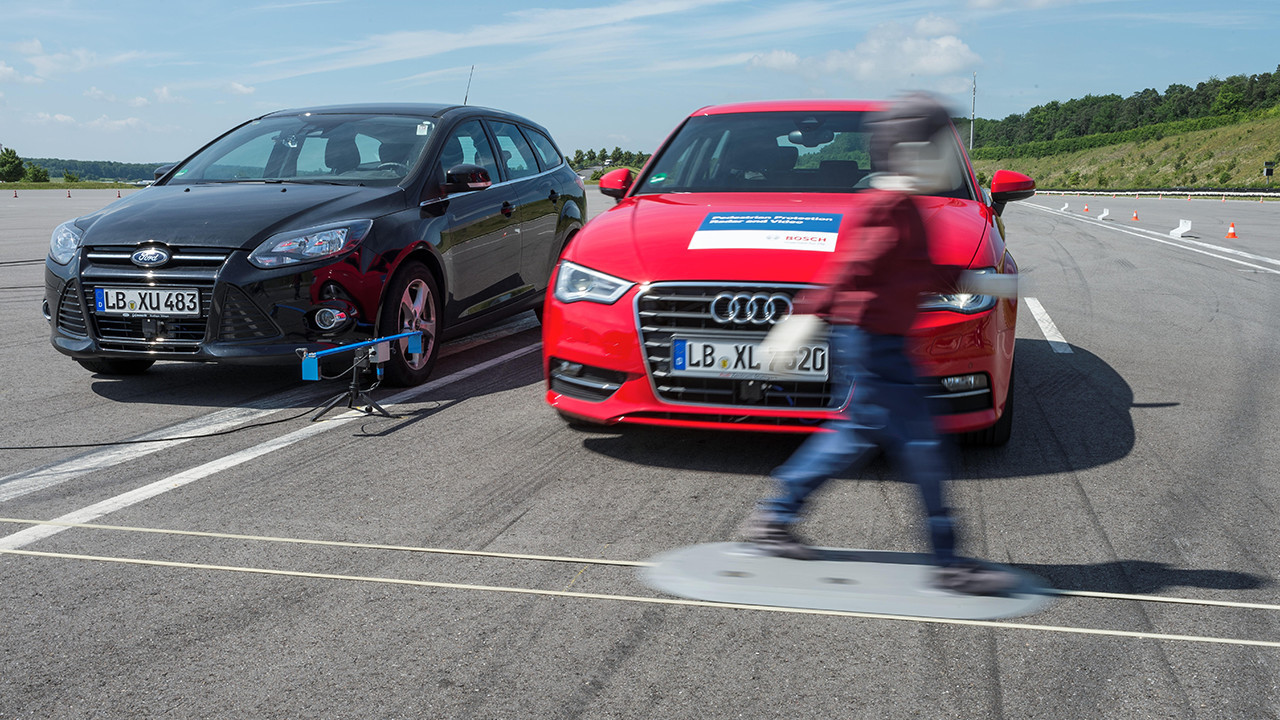Stuttgart, Germany – In critical situations, many new vehicles in Germany already brake automatically, according to a Bosch evaluation of the 2015 vehicle registration statistics. The findings indicate that one in four newly registered cars has an automatic emergency braking system on board to prevent accidents and, if necessary, bring the vehicle to a stop in the event of an emergency. Adaptive cruise control (ACC) is also very popular among car buyers. In 2015, it was already found in 11 percent of new vehicles. Parking assistance systems – from parking beepers to park and steering assist – make parking easier in every second newly registered car in Germany. Sixteen percent of new cars monitor lane changes or independently stay in their lane, and 11 percent of new vehicles feature camera-based road sign recognition. “Driver assistance systems are gaining an increasing foothold in the market and are thereby paving the way for automated driving,” says Dr. Dirk Hoheisel, a member of the Bosch board of management. “The more familiar drivers are with driver assistance systems, the greater the acceptance of automated driving.”
Automatic emergency braking systems also gaining popularity in Europe
Both in Germany and other European countries, automatic emergency braking systems are gaining ground. In 2015, 32 percent of newly registered cars in the Netherlands were equipped with this kind of braking assistance system. That figure was 30 percent in Belgium and 16 percent in Spain. In the United Kingdom, 21 percent of all new cars sold provided emergency braking support. One reason for the widespread popularity of automatic emergency braking systems is the Euro NCAP rating scheme. This kind of assistant is necessary to receive the highest rating of five stars in the consumer protection organization’s vehicle tests. Automatic emergency braking systems use a radar and/or video sensor to monitor the area in front of the vehicle. If an obstacle comes dangerously close to the vehicle in its own lane, it warns the driver. If he or she fails to react, it automatically performs an emergency braking maneuver. In Germany alone, according to Bosch accident research, up to 72 percent of all rear-end collisions resulting in injury could be prevented if all vehicles were equipped with an automatic emergency braking system.
Driver assistance systems are paving the way for automated driving
From braking and steering to acceleration, driver assistance systems support drivers in confusing or critical traffic situations and intervene in a targeted manner if necessary. In doing so, they make road traffic safer and help drivers reach their destination with less stress and hassle. The electronic assistants are based on sensors featuring radar, video, and ultrasonic technology that capture the vehicle’s surroundings. Driver assistance systems are also the preliminary stage of automated driving, which will allow cars to take over complete control on their journey from point A to point B in the future. At Bosch, nearly 3,000 developers are already working on new driver assistance systems – and therefore also on automated driving and parking.
Bosch study based on the 2015 statistics for newly registered cars
In 2015, 3.2 million cars were newly registered in Germany. To conduct its evaluation of driver assistance systems, Bosch used data from the service provider IHS Markit and the German Federal Motor Transport Authority’s 2015 statistics for newly registered cars. On this basis, the most important vehicle models in each segment were identified. Using the lists of vehicle features, they were examined to determine what driver assistance systems were offered for individual models.
Mónika Hack
+36 70 510 5516
Mobility Solutions is the largest Bosch Group business sector. In 2016, its sales came to 43.9 billion euros, or 60 percent of total group sales. This makes the Bosch Group one of the leading automotive suppliers. The Mobility Solutions business sector combines the group’s ex-pertise in three mobility domains – automation, electrification, and connectivity – and offers its customers integrated mobility solutions. Its main areas of activity are injection technology and powertrain peripherals for internal-combustion engines, diverse solutions for powertrain electri-fication, vehicle safety systems, driver-assistance and automated functions, technology for user-friendly infotainment as well as vehicle-to-vehicle and vehicle-to-infrastructure communi-cation, repair-shop concepts, and technology and services for the automotive aftermarket. Bosch is synonymous with important automotive innovations, such as electronic engine man-agement, the ESP anti-skid system, and common-rail diesel technology.
The Bosch Group is a leading global supplier of technology and services. It employs roughly 390,000 associates worldwide (as of December 31, 2016). The company generated sales of 73.1 billion euros in 2016. Its operations are divided into four business sectors: Mobility Solutions, Industrial Technology, Consumer Goods, and Energy and Building Technology. As a leading IoT company, Bosch offers innovative solutions for smart homes, smart cities, connected mobility, and connected manufacturing. It uses its expertise in sensor technology, software, and services, as well as its own IoT cloud, to offer its customers connected, cross-domain solutions from a single source. The Bosch Group’s strategic objective is to deliver innovations for a connected life. Bosch improves quality of life worldwide with products and services that are innovative and spark enthusiasm. In short, Bosch creates technology that is “Invented for life.” The Bosch Group comprises Robert Bosch GmbH and its roughly 440 subsidiaries and regional companies in some 60 countries. Including sales and service partners, Bosch’s global manufacturing and sales network covers nearly every country in the world. The basis for the company’s future growth is its innovative strength. At 120 locations across the globe, Bosch employs some 59,000 associates in research and development.
Additional information is available online at www.bosch.com, www.iot.bosch.com, www.bosch-press.com, www.twitter.com/BoschPresse, www.bosch.hu



